Planned breeding programs needed to improve production

Farming of channel catfish (Ictalurus punctatus) began over 30 years ago in the United States, and has since become one of the most successful aquaculture enterprises in the country. The species dominates U.S. aquaculture production and generates about U.S. $1 billion each year.
Early research in catfish reproduction, nutrition and disease control laid the basis for the establishment of commercial culture. Although research on channel catfish genetics and breeding began in the late 1960s, applications of genetic improvement in channel catfish culture have lagged behind genetic improvements made in other farm animal industries.
Genetics issues in reproduction and spawning
In aquatic species, control of reproduction or spawning is required for an effective genetic improvement program, and is possible only where the culturist has control over the entire life cycle. Commercial catfish farms typically maintain thousands of broodfish and have access to wild broodstock, if necessary, to increase genetic variation. Large numbers (10,000 to 20,000) of offspring in each spawn or family would permit high selection intensity if commercial producers could effectively select individual catfish or broodfish for specific traits.
Limitations
However, genetic selection in commercial culture is generally not feasible, because most producers simply culture fingerlings or foodfish for sale, do not have information on individual or family performance, and lack the facilities and expertise necessary to implement effective breeding programs. In addition, channel catfish are commercially reproduced only during the natural spring spawning season. Selective matings in a breeding program are therefore currently limited to yearly intervals.
Spawning methods
Spawning is most commonly done by the open-pond method, where male and female broodfish are allowed to mate randomly in large ponds supplied with spawning containers. Pen and aquarium spawning methods are more intensive, but have value in breeding programs because the culturist has greater control over broodstock selection. Pond spawning is most suitable for producing large numbers of families.
Qualitative genetics
Qualitative traits usually modify the appearance of an organism. They are typically characterized into discrete phenotypic classes, such as color, body modification, or other unique traits. Qualitative traits are usually controlled by only one or a few genes.
Albinism
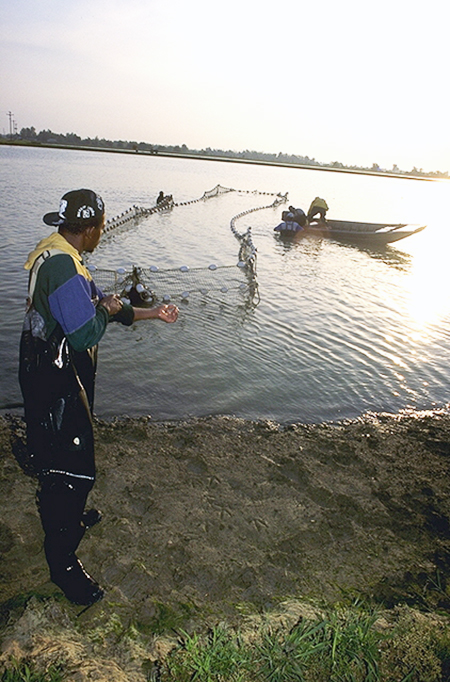
The best known – and potentially valuable – qualitative trait in channel catfish is albinism, which is inherited as a single homozygous recessive trait. Fillets from processed albino catfish are lighter in color, appear to have a fresher quality, and are more appealing to consumers.
The growth rates of albinos are similar to that of normally pigmented fish. However, albinos may have more rigid temperature requirements for spawning, and spawning success is often lower. In spite of such difficulties, as well as a potentially higher incidence of bird predation, some producers have stocked large percentages of albino fish in ponds.
Deformities
Physical deformities in channel catfish, such as multiple tails, no tail, or “stumpbody,” have generally been found detrimental to overall performance. The frequency of these traits is variable, and the inheritance, when studied, was found to lack a genetic basis. They are likely to be environmentally induced and can lower processing percentages, if present. Thus, except for albinism and protein variation (which assists identification of genetic groups), currently known qualitative traits have limited value.
Quantitative genetics
Most traits of economic importance – such as growth rate – are controlled by multiple genes and referred to as quantitative traits. Geneticists have been very successful in producing new varieties of plants and improving domestic livestock performance through a variety of selective-breeding analyses and methods.
Focus on economic traits
Quantitative genetics focuses on traits of economic importance, such as growth, feed efficiency, disease resistance, and processing characteristics. Since they result from the combined actions of many genes, complicated statistical analyses are commonly conducted to describe the characteristics of these traits.
Catfish traits
Quantitative catfish production traits including weight, length, and fecundity are recorded as measurements on individuals. These measurements are referred to as the phenotype, which provides the actual physical record of the genes that control the trait. Geneticists use this information to select the best-performing animals in a breeding program.
For example, most catfish culturists know that when juveniles or fingerlings of the same size are stocked into ponds, fish size at harvest will vary greatly. Some fish will appear to have not grown at all, while others will have grown very rapidly. Some fish grow fast because they have a good genetic basis, while others do well because they have a favorable environment, such as greater access to food – an environmental effect not related to genetics.
Crossbreeding
Crossbreeding between specific catfish strains has led to improved performance, but is not widely practiced in the commercial industry. This is probably due to the lack of true inbred lines and unpredictable performance among crossbreds.
Hybridization
Hybridization often provides significant increases in growth and processing yield. For example, hybrids of female channel catfish crossed with male blue catfish (Ictalurus furcatus) reflect increased processing yield, because they retain the small head size of blue catfish and the robust body shape of channel catfish.
However, studies have shown variability in production depending on the individual strains of catfish used to produce the hybrid crosses. Although some success in producing hybrids can be achieved with hormone injections in pen and aquarium spawning procedures, hybridization is not yet practical in large commercial operations. Future research may increase hybridization rates or lead to select synthetic lines that spawn naturally under commercial pond conditions.
Synthetic catfish lines
Two synthetic catfish lines have been produced using two strains of channel catfish and blue catfish in the United States Department of Agriculture’s Agricultural Research Service (USDA-ARS) breeding program at Stoneville, Miss., USA. In this program, fish are being selected for fillet yield, growth, disease resistance, and reproductive performance.
Strains
Strains of channel catfish used in research and commercial culture are typically based on geographic origin rather than performance records. Catfish strains cultured in hatcheries or used in commercial culture generally have faster growth than wild stocks.
Most comparative evaluations have focused on growth because of its obvious economic impact in commercial production. However, strains have also been shown to vary in feed consumption and efficiency, disease resistance, dressout percentage, environmental tolerance, and reproduction. Increased emphasis will likely be placed on selection for disease resistance in future breeding programs.
Improved lines released
Six lines of improved catfish have been released from research institutions to commercial producers since 1983. These releases consisted of Kansas select lines (second-, third- and fourth-generation), Marion second-generation select lines, the Auburn line, and the Marion/Kansas third-generation line from the Auburn University catfish program in Alabama, USA.
The largest release with the greatest potential impact occurred in 1984, when approximately 60,000 Kansas line fish were released from Auburn University to 63 producers in seven states. Still cultured by commercial producers, this line is generally considered one of the fastest-growing lines. However, poor reproductive performance – with sexual maturity at 4-5 years and low spawning success – has limited its spread.
The Mississippi State University Agricultural and Forestry Experiment Station (MAFES) also released the MSU2 catfish line, selected for growth and nitrite tolerance in 1991. These fish are still available on a limited scale.
The most extensive research and evaluation studies have been conducted on the NWAC103 catfish line jointly released by USDA, ARS and MAFES from a cooperative program at the Thad Cochran National Warmwater Aquaculture Center in Stoneville, Mississippi.
Molecular genetics
Since traditional selection by performance is difficult for many traits, molecular genetics in a breeding program provide useful tools for the identification of genes that control economically important traits. A trait may be sex-limited, such as identifying males that will pass on beneficial traits for spawning success.
Testing disease resistance depends on the ability to perform controlled experiments with pathogens, which is often difficult for catfish diseases. In some cases, performance testing is lethal, such as measurement of carcass quality. A rapid molecular test – a DNA or protein assay, for example – could be used to identify superior broodstock without the need for performance testing.
Tools
The tools needed to perform these tests in catfish include molecular DNA and protein markers, genetic linkage and physical maps, reference and resource families, and bioinformatics capacity. The most efficient and useful approach for utilizing molecular genetic information for catfish breeding will utilize DNA markers.
Molecular maps
The molecular maps that have been formulated for domestic animals are providing powerful tools for selective breeding. An initial catfish genetic-linkage map consists of 263 microsatellite markers (short stretches of repeated DNA) arrayed in 32 linkage groups. As more markers are placed on the map, there will presumably be 29 linkage groups – one for each chromosome in the haploid genome.
Microsatellites
Microsatellite markers have been used to determine the parentage of spawns collected from communal ponds and to provide a genetic fingerprint of the NWAC103 catfish line. Coincident with the release of this line was the development of a strain certification program by the catfish industry.
Genetic markers will help producers maintain the genetic integrity of NWAC103 and other lines of catfish released in the future. Although expensive and time-consuming, the benefits of genomics will extend beyond the current limitations of quantitative genetics and selective breeding. Breeding aids such as sex reversal, induced polyploidy, gene transfer, and cryopreservation may also be used to increase performance.
Single-sex populations
The production of single-sex populations has been proposed in many fish species to allow culturists to control reproduction and select fast-growing fish. It is possible to manipulate the natural mode of sex determination by the addition of hormones during specific stages of development.
The application of hormone-treated feed to newly hatched fry has produced all-female populations of channel catfish. Oral administration of hormones to produce female fish is called paradoxical feminization, because the masculinization of fish typically results from treatment with androgens like testosterone.
Since male catfish generally grow faster than females in mixed-sex populations, all-male culture could provide an increase in production efficiency. The synthetic androgen trenbolone acetate (TBA), which induces anabolic weight gain in beef cattle, has been shown to masculinize blue tilapia and channel catfish. However, TBA treatments in catfish have not always resulted in all-male populations. TBA-treated fish also exhibited slower growth than controls, abnormal gonadal development, and increased susceptibility to infection with Edwardsiella ictaluri.
Induced polyploidy
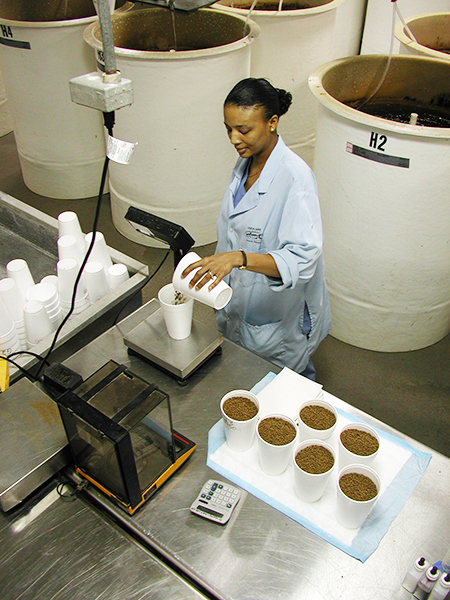
Triploidy and tetraploidy have been induced in channel catfish by cold shocking or heat shocking fertilized eggs at appropriate times after fertilization. Triploid fish (with three sets of chromosomes) were found to be sterile and exhibit faster growth than diploids in tank culture. But subsequent studies showed no production improvement when triploid fish were grown in earthen ponds.
Because of the practical limitations on collecting large numbers of fertilized catfish eggs, it is unlikely polyploid catfish will be used in commercial culture. The development of tetraploid broodstock (with four sets of chromosomes) would theoretically enable the spawning of tetraploid with diploid fish using conventional pond-spawning procedures for direct production of triploidy animals.
Gene transfer
Gene transfer technology is an established tool in molecular genetics that has led to the development of new biotechnology industries. Over the past few years, the technology has been applied to produce transgenic catfish and several other fish species.
The faster growth and increased disease resistance likely to be exhibited by transgenic fish could improve production efficiency. Recent research, for example, has demonstrated increased growth in catfish given injections of bovine growth hormone. With regulatory approval and public acceptance, transgenic fish could be cultured in commercial systems.
Cryopreservation
Cryopreservation has become essential within the dairy industry for the acceleration of selective breeding, maintenance of improved lines, and distribution of superior genetic material. Sperm cryopreservation has also been studied in 200 species of fish, including the Ictaluridae, Clariidae, and Pangasiidae families of catfish.
Work with cryopreserved catfish sperm begun in the 1970s yielded limited motility in thawed sperm. When resumed in the 1990s, further studies yielded fertilization with thawed sperm. Subsequent work has refined protocols.
Long-term gamete storage would permit a reduction of the facilities needed for broodstock maintenance, increase the number of genetic stocks available, facilitate shipment of improved germplasm or reference stocks and provide a year-round supply of sperm for commercial production and research. Application of this technology is constrained, however, by the requirement for collection of unfertilized eggs for artificial spawning.
Conclusion
In addition to substantial background information on catfish genetics, several powerful technologies have become available within the past decade for application in this species. Future advances will combine the research efforts of government, university, and private-sector facilities to apply the genetic tools to the improvement of channel catfish.
Improved lines will have to be distributed to the industry for growth, harvest, and evaluation. The catfish industry of the future will need to establish harvesting and processing evaluation programs similar in intensity and organization to those employed in livestock industries. A protocol for release, testing, stock multiplication and stock verification also needs to be developed for channel catfish stocks.
(Editor’s Note: This article was originally published in the February 2002 print edition of the Global Aquaculture Advocate.)
Now that you've reached the end of the article ...
… please consider supporting GSA’s mission to advance responsible seafood practices through education, advocacy and third-party assurances. The Advocate aims to document the evolution of responsible seafood practices and share the expansive knowledge of our vast network of contributors.
By becoming a Global Seafood Alliance member, you’re ensuring that all of the pre-competitive work we do through member benefits, resources and events can continue. Individual membership costs just $50 a year.
Not a GSA member? Join us.
Authors
-
William R. Wolters, Ph.D.
USDA, ARS Catfish Genetics Research Unit
Thad Cochran National Warmwater Aquaculture Center
141 Experiment Station Road Stoneville, Mississippi 38776 USA[118,111,103,46,97,100,115,117,46,115,114,97,46,101,108,108,105,118,101,110,111,116,115,45,97,115,109,64,115,114,101,116,108,111,119,98]
-
Terrence R. Tiersch, Ph.D.
Aquaculture Research Station
Louisiana State University Agricultural Center
Baton Rouge, Louisiana, USA
Tagged With
Related Posts

Health & Welfare
A look at aquaculture genomics
Advances in genomics assist aquaculture science by deepening the understanding of adaptation, physiology and quantitative genetics.
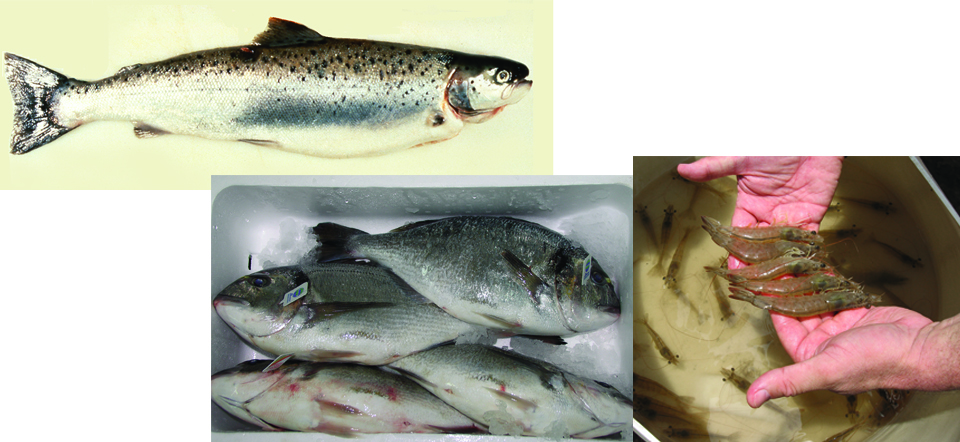
Health & Welfare
Aquaculture genomics: Progress in identifying species genetics continues
The continued application of genome research to aquaculture will provide unprecedented accuracy for genetic selection of performance and production traits.
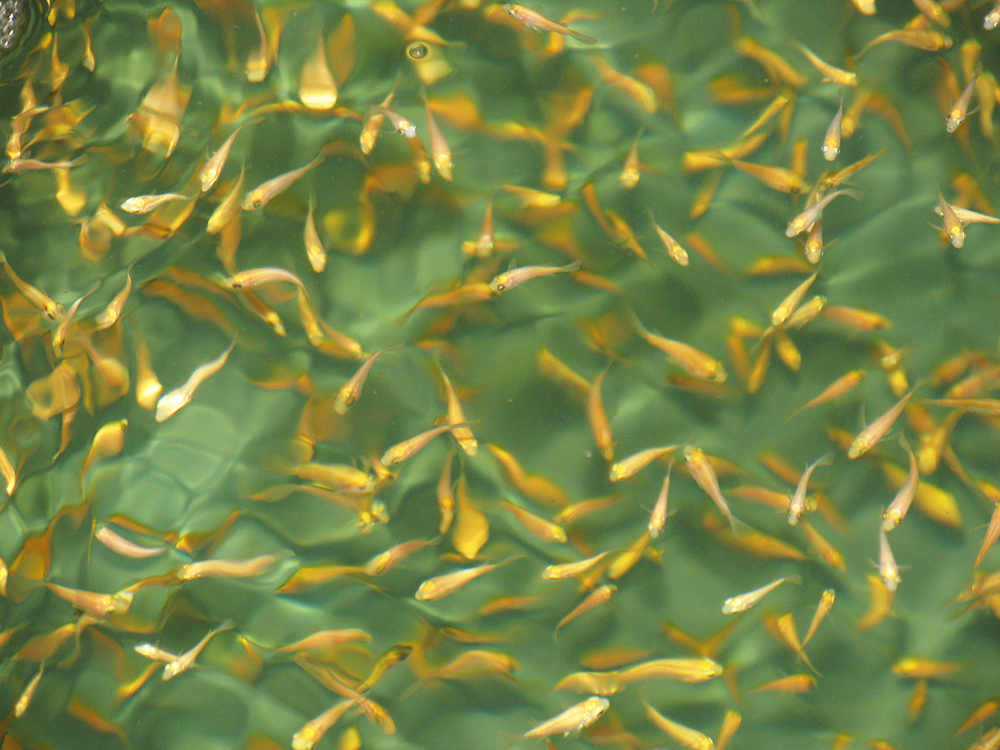
Health & Welfare
Biosecurity practices on fish farms need beefing up
Biosecurity measures and preventive strategies are essential in any biological production chain. Properly planned and implemented biosecurity programs will enhance animal health, production and economics.
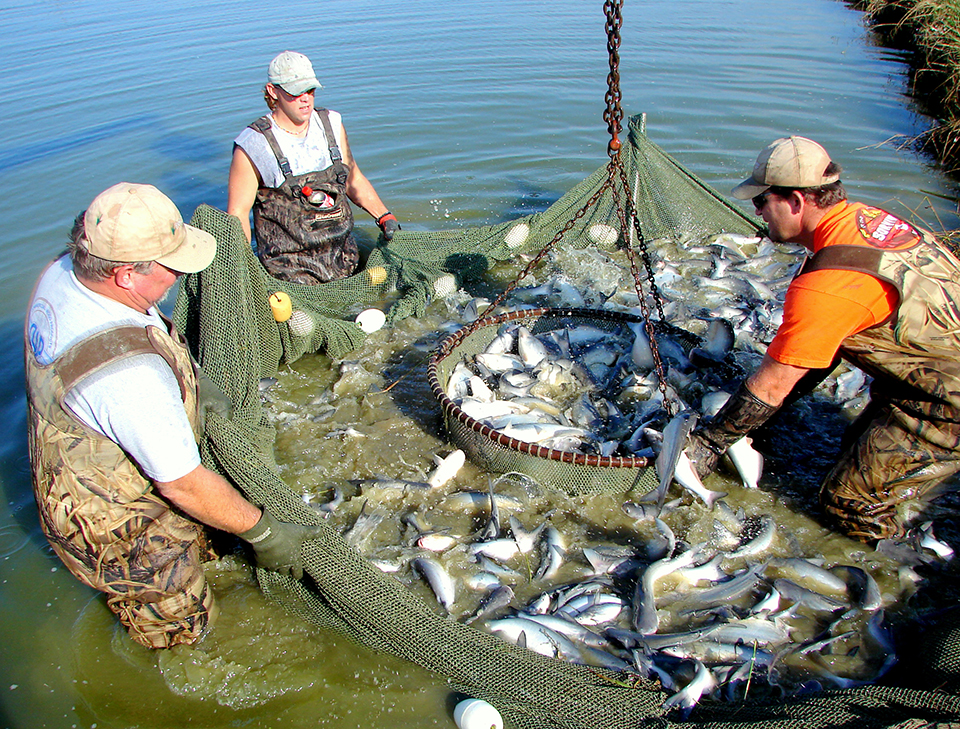
Health & Welfare
Blue catfish outproduce channel catfish under low-D.O. conditions
Although there is increasing interest in blue catfish, a potential disadvantage of the fish when compared to channel catfish is their reported poorer tolerance of low dissolved-oxygen concentrations.



